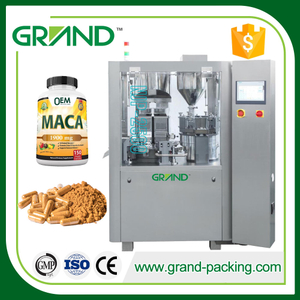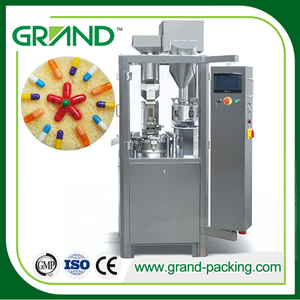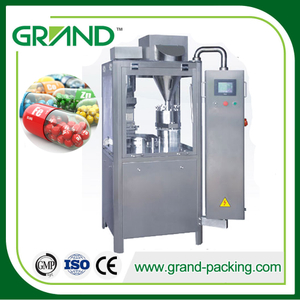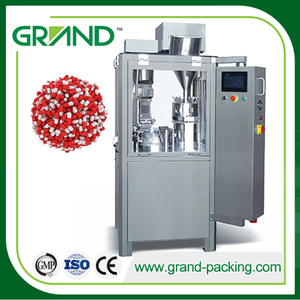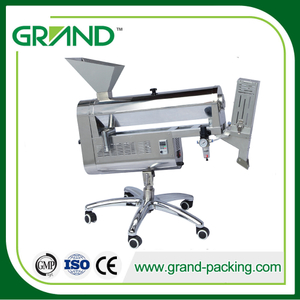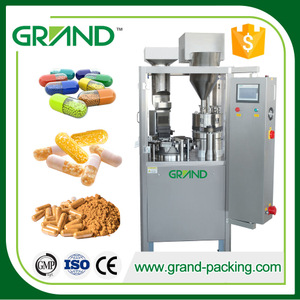1. What is Capsule?
2. Capsule Type
3. What is a Capsule Filling Machine?
4. Capsule Maker Machine’s Working Principle
5. Types of Capsule Manufacturing Machine
5.2-5.3 .Semi-automatic Capsule Filling Machine
5.4. Automatic capsule filling machine
5.5. Fully Automatic Liquid Capsule Filling Machine
5.5.1. Brief introduction
As capsule filling machine for powder/granule, the liquid capsule filling machine need to be installed corresponding molds to fill 000#~5# hard capsules and A, B, C, D, E safety capsules. In addition, its filling volume can be adjusted by changing the mold (changing the quality of mold holes) accordingly. The model NJP-130, NJP-260, NJP-600, etc., the number 130, 260 and 600, etc. represents the output per minute, such as NJP-130C means three-hole with maximum production capacity is 130 grains/min, NJP-260C means six-hole with maximum production capacity of 260 grains/min, NJP-600C means ten-hole with maximum production capacity of 600 grains/min.

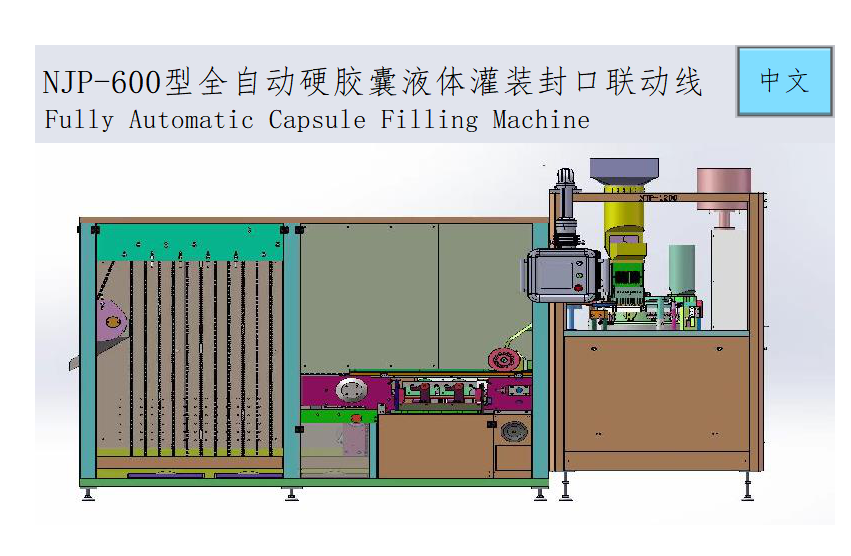
Liquid capsule filling machine is much more complicated than powder/granule capsule filler. It is not only the filler itself, but also the banding of liquid capsules after filling. As shown in the picture above, the capsule filling machine is placed in the right side, while the liquid capsule banding device is placed in the large area of the left side.
Generally, liquid capsule filling machine do not fill only one material, but often the combination like this: pure liquids, granules and liquids, microcapsules and liquids, tablets and liquids. Therefore, the liquid capsule manufacturing machine needs to reserve a replaceable feeder station for different materials.
5.5.2. Working process
1) During the machine operation, the capsules in the capsule bin will enter the capsule feeding plate one by one vertically on the first station, then are pushed to the outer end of the correction block by horizontal fork, to enter the die hole by the vertical fork, capsule cap and body are separated under the vacuum suction.
2) In the second station, the lower module descends and moves outward.
3) The third station is equipped with a sensor to detect the capsule position in the die hole.
4) For liquid filling at the fourth station, the ceramic peristaltic pump pumps the liquid in the liquid hopper into the capsule body.
5) The fifth station is a reserved extension station, which can be installed with pellet or micro capsules and tablet filling devices.
6) The sixth station adopts vacuum pressure to remove and suck off the defective capsules.
7) The seventh-station’s fiber optic sensor detects the yield rate, the lower module moves inward and rises at the same time.
8) The eighth station is capsule locking, making the pushing rod lift to lock the filled capsule.
9) The ninth station will discharge the locked capsules and collecting, or directly connect to the capsule feeding mechanism of the liquid capsule banding machine.
10) The tenth station cleans the die hole with vacuum air pressure for the the next production cycle again.

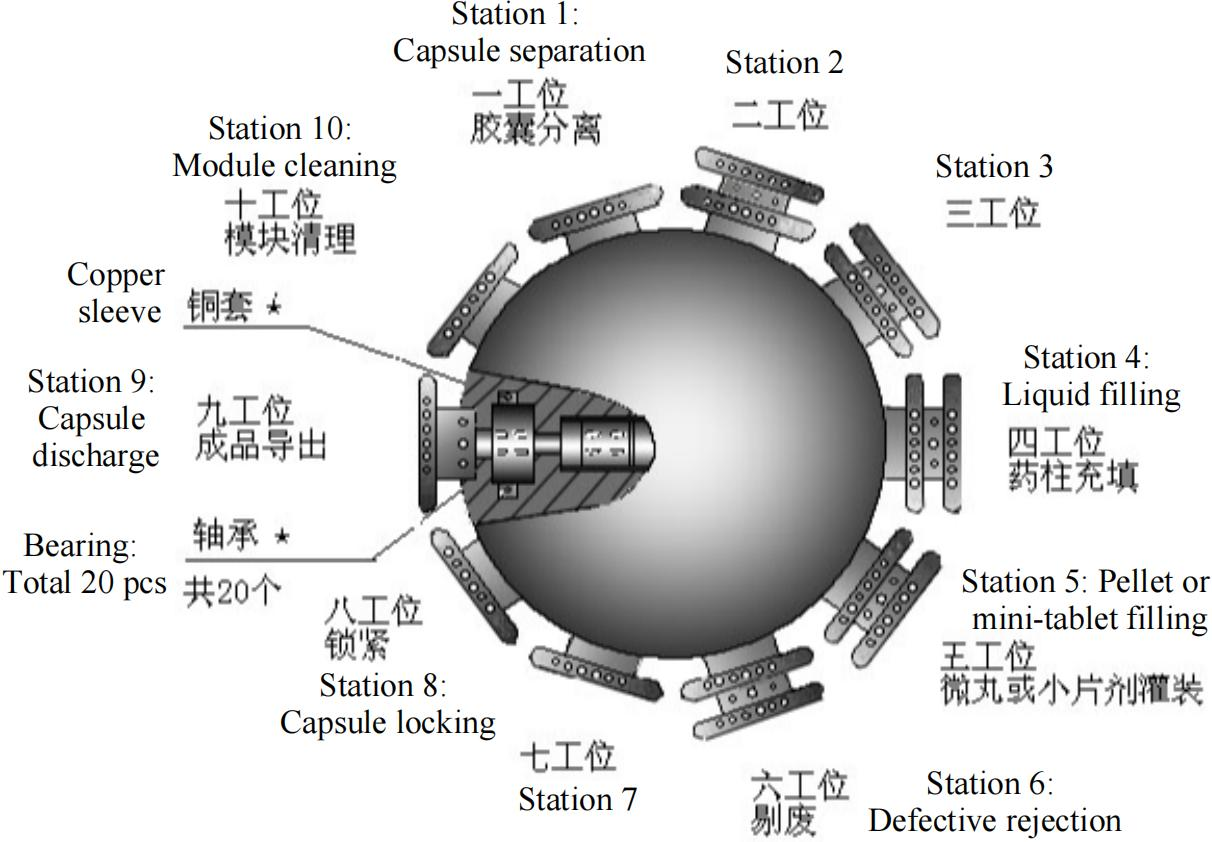

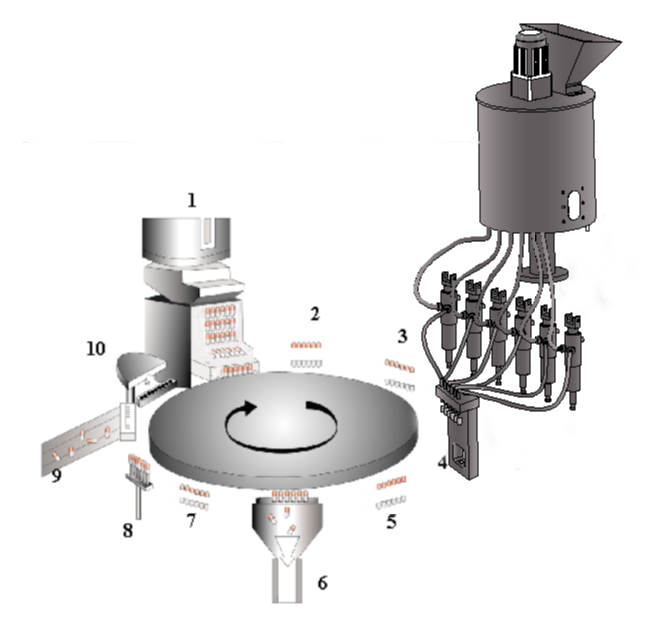
In the figure above, the station 3 and 5 are reserved for extension stations, where can be installed corresponding device for filling with sustained-release pellets and tablets, or mixed with liquid medicine in the same capsule separately.
5.6. Liquid capsule banding machine
5.6.1. Brief introduction
As we mentioned earlier, a capsule is made up of a capsule cap and a capsule body. When the filling contents contains solvent solutions, it is a liquid capsule. However, the filled liquid will seep out of the junction of the capsule cap and body, which will cause the capsule to be defective. Therefore, a device is required to seal the capsule immediately after it has been filled and locked, before the liquid seeping out.
The liquid capsule banding machine is the device to avoid liquid capsule leakage, which will automatically band the filled capsule. The banding solution is required to seal the capsule, which is an aqueous solution based on gelatin or HPMC. The banding roller will apply the banding solution to the capsule cap and body joint for two loops. After that, the capsule is fed into the dry area, the banding solution solidify in the blowing air until it is not adhesive, now the liquid capsule is sealed and becomes a qualified product.



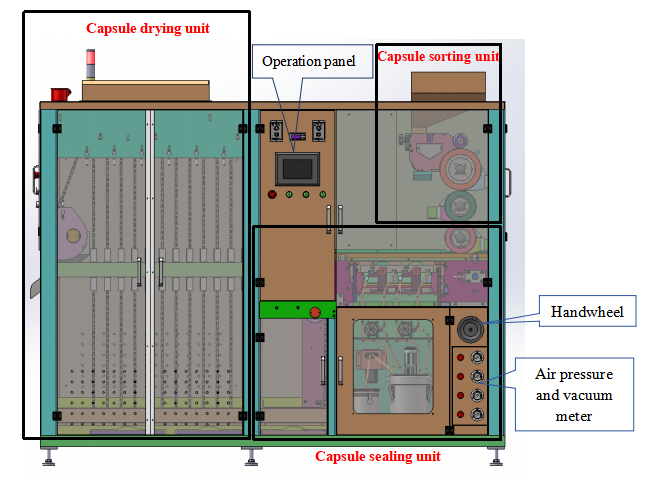






 Machine outline diagram
Machine outline diagram
5.6.2. Working principle
(1) Capsule arranging mechanism
It also called capsule feeding and arranging mechanism. Firstly, the capsule is fed from capsule hopper to the capsule vibrating trough (or capsule guide rail in production line), which transfers the capsules to the feeding drum by vibrating. During transferring, the brush roller can prevent the capsule from entering the drum cavity. The sensor in the feeding roller is used to detect if there is any capsule in the cavity. If yes, the machine will shut down automatically, to prevent the capsule from being crushed.
The inner diameter of each cavity of capsule arranging roller is designed according to the capsule diameter, so that when the capsule enters the hole, the capsule body will firstly fall into the cavity.
On the other hand, if the capsule cap enters the hole first, the capsule body protrudes from the capsule arranging roller, and then falls back into the cavity through the guide board. Then the capsule are transferred as the capsule cap enters the transfer roller and falls into the cavity by the guide board. Now the whole arranging process is finished.











(2) Banding platform
The sorted capsules are transferred to the conveyor slats cavity. The first banding roller rotates the capsule for banding the capsule joint circumferentially. After that, the capsule is sealed in the same way by the second banding roller for completely banding.
The arranged capsules are transferred to the cavity of the conveyor slats, where the cavity axis is offset by 3° relative to the longitudinal centerline of the conveyor slats, and the capsule moves to the side of the capsule cap while rotating, which is better to align the capsules in the banding position.

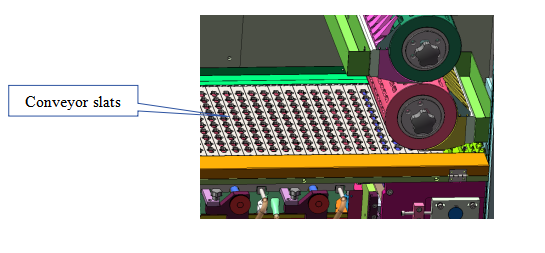


 The conveyor roller drives the slats through the chain to convey the capsules dropped from the transfer roller to the banding area for banding, and then convey the sealed capsules to the drying unit.
The conveyor roller drives the slats through the chain to convey the capsules dropped from the transfer roller to the banding area for banding, and then convey the sealed capsules to the drying unit.

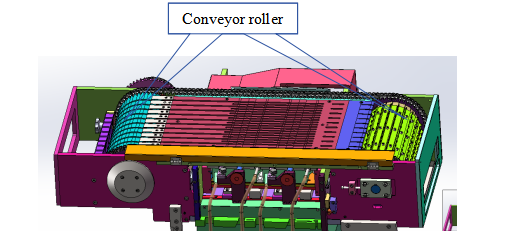
(3) Banding unit
The banding solution is continuously circulated between banding roller and banding box. When gelatin is used for banding, the temperature of the banding solution should be controlled within the specified temperature range. The banding solution state can be maintained by adding banding gel and hot water to the banding roller at regular intervals.
① Banding roller
The liquid capsule need to be sealed twice. Even if there are bubbles generated during the first banding, they can be eliminated during the second banding.
② Banding box
The banding box stores banding solution and continuously replenishes the solution to the banding rollers. The banding box is attached with a panel heater and the temperature of the banding solution is controlled.

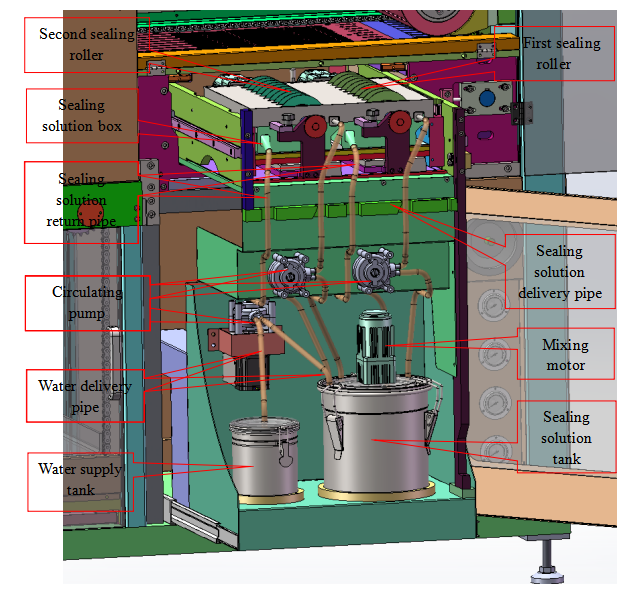














③ Banding solution tank
The banding solution tank is equipped with a temperature sensor and heater to control the temperature. A liquid level sensor is also equipped to monitor the banding solution level.
④ Water supply tank
It features regularly water supply function which keeps the constant concentration of the banding solution by periodically adding hot water from the water supply tank to the banding solution tank - in order to suppress the viscosity change caused by the evaporation of water in the banding solution during operation. As the banding solution tank, the water tank is also installed a temperature sensor, heater and a water level sensor.
(4) Drying unit
The sealed capsules need to be transferred from the transfer slats to the bracket in the drying unit. The filtered normal air is supplied to the drying unit for blowing the sealed capsules until they are dried and not adhesive.




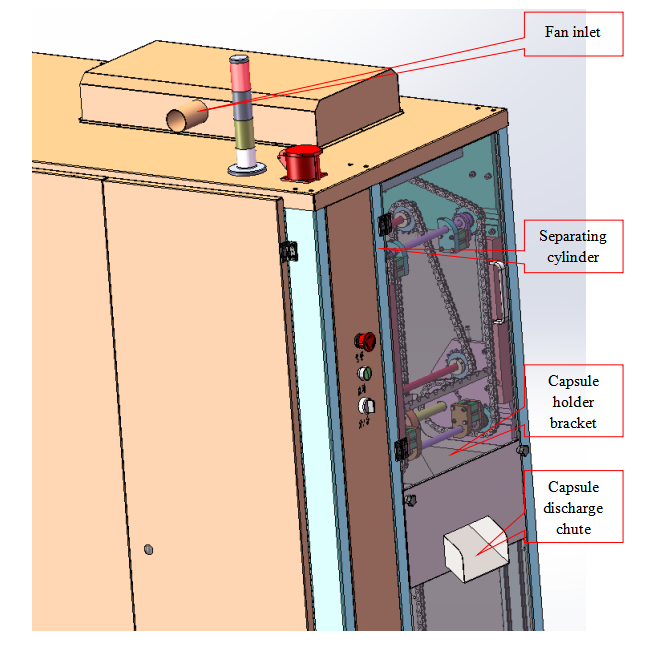

The sealed capsule is loaded on a carrier and dried by blowing in filtered room air.
(1) Capsule holder bracket
The capsule holder bracket is used for placing sealed capsules and then transferred to the drying unit.
(2) Capsule discharge chute
It is used to discharge the sealed dry capsule (finished liquid capsule).
All is the entire process from liquid filling to capsule banding of liquid capsules.
Why Liquid Capsule Can't Be Sealed Well?
updating......

 English
English










